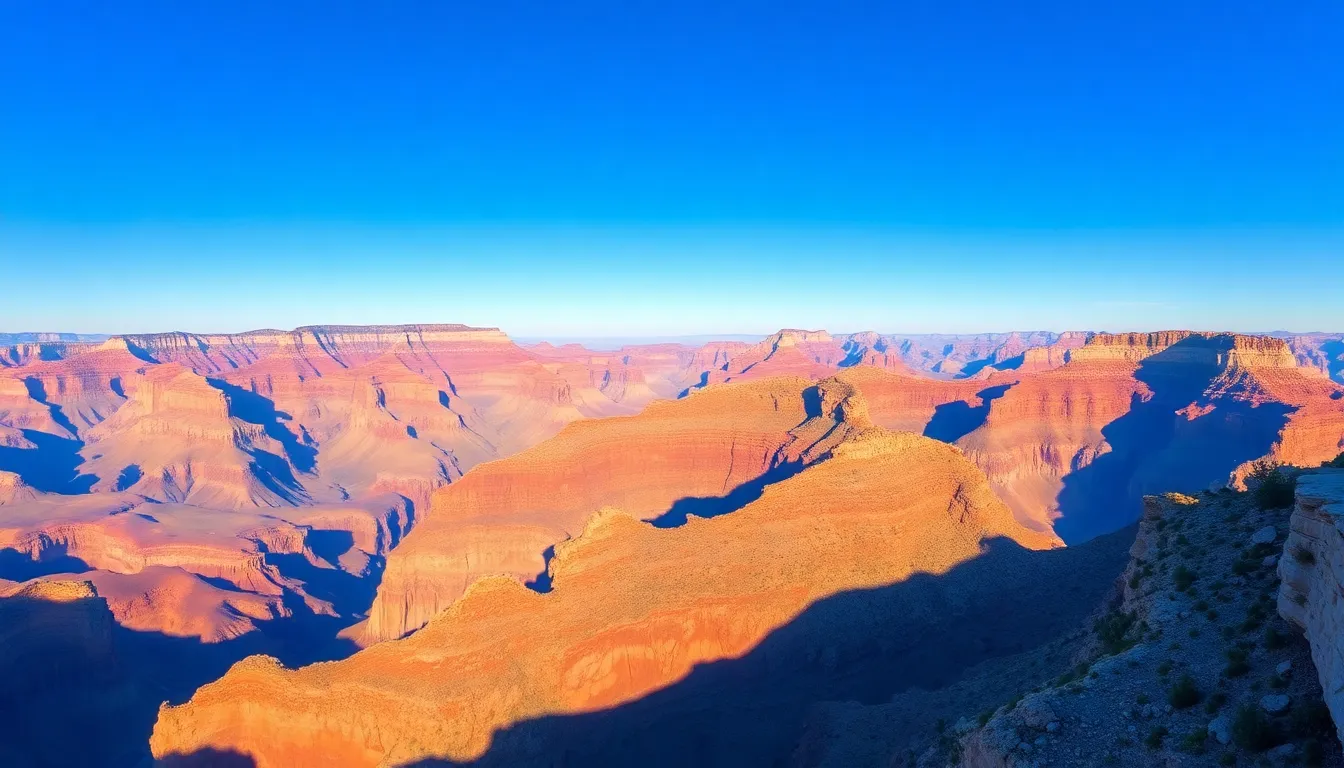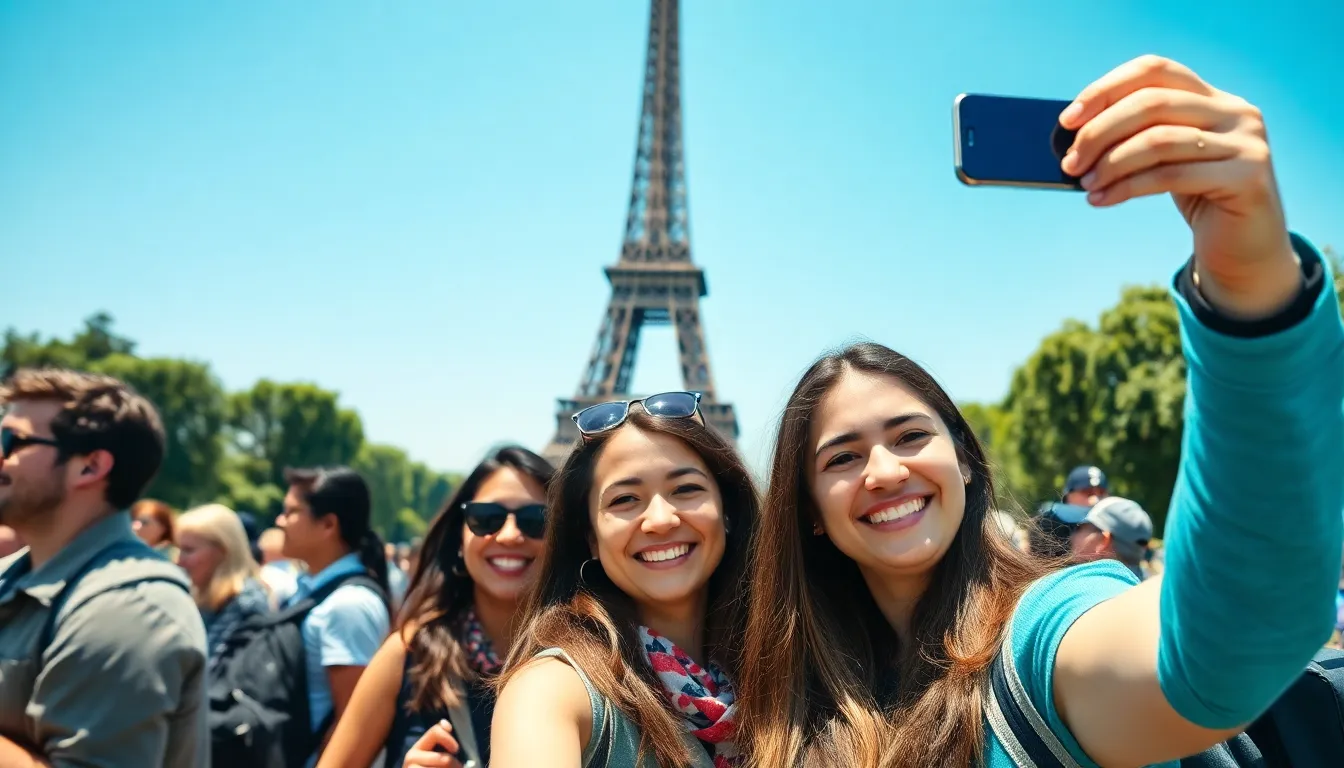Table of Contents
ToggleTravel has a unique way of inspiring wanderlust and curiosity, and certain icons have come to symbolize the spirit of adventure. From the majestic Eiffel Tower to the serene beaches of Bali, these landmarks evoke dreams of exploration and cultural immersion. They serve as beacons for travelers seeking unforgettable experiences and memories.
Exploring these icons of travel not only highlights their architectural and natural beauty but also unveils the stories and histories that shape them. Each destination offers a glimpse into the culture, traditions, and aspirations of the people who call them home. As wanderers embark on their journeys, these symbols guide them toward new horizons and unforgettable encounters.
Icons of Travel: An Overview
Travel icons serve as beacons of cultural significance and architectural marvels. They represent destinations that embody beauty, history, and unique experiences. Landmarks like the Eiffel Tower in Paris and the Great Wall of China showcase the artistry of human design while embodying their respective cultures.
Key Icons of Travel
- Eiffel Tower, Paris: Built in 1889, this iron lattice tower reaches 1,083 feet tall. It stands as a symbol of romance and innovation, attracting over 7 million visitors annually.
- Great Wall of China: Spanning over 13,000 miles, this ancient fortification showcases China’s historic military prowess. Construction began in the 7th century BC, making it a UNESCO World Heritage Site.
- Machu Picchu, Peru: Inhabited during the 15th century, this Incan citadel sits at 7,970 feet above sea level. Its breathtaking mountain backdrop and archaeological significance contribute to its status as a top travel destination.
- Colosseum, Rome: This iconic amphitheater, completed in AD 80, held around 50,000 spectators. It represents the grandeur of ancient Roman engineering and entertainment.
- Statue of Liberty, New York: Gifted by France in 1886, this colossal statue symbolizes freedom and democracy. It welcomes over 4 million visitors each year to Liberty Island.
Cultural Connections
Exploring these travel icons unearths the stories infused within their architecture. Each landmark reflects the values, struggles, and triumphs of the cultures that built them. Visitors gain deeper insights into local traditions, rituals, and lifestyles by engaging with these symbols of human achievement.
Iconic Natural Wonders
Natural landmarks also serve as symbols of travel, inspiring awe and adventure. Examples include:
- Grand Canyon, USA: Stretching 277 miles, this natural wonder reveals 2 billion years of geological history, attracting millions for its stunning vistas.
- Maui’s Beaches, Hawaii: Renowned for their pristine beauty, beaches like Kaanapali and Wailea serve as a slice of paradise, offering unique cultural experiences rooted in Hawaiian tradition.
Travel icons, both man-made and natural, offer travelers significant insights into the world’s beauty and diversity. Engaging with these icons cultivates a deeper appreciation for global cultures and their narratives.
Iconic Destinations

Travel reveals iconic destinations that embody beauty and history. Each location offers unique insights into the cultural and natural heritage of our world.
Natural Wonders
Natural wonders captivate with breathtaking beauty and unique landscapes. Examples include:
- Grand Canyon: Spanning 277 miles, this Arizona canyon showcases geological formations, revealing over two billion years of Earth’s history.
- Great Barrier Reef: Located off the coast of Australia, it is the world’s largest coral reef system, stretching over 1,400 miles and hosting an incredible diversity of marine life.
- Victoria Falls: Straddling the border of Zambia and Zimbabwe, this massive waterfall drops 354 feet, making it one of the largest and most magnificent in the world.
These natural icons not only inspire awe but also highlight the importance of conservation and environmental protection.
Cultural Landmarks
Cultural landmarks serve as testaments to human ingenuity and historical significance. Key examples include:
- Eiffel Tower: Standing 1,083 feet tall in Paris, France, this iron lattice tower symbolizes French culture and engineering prowess since 1889.
- Machu Picchu: This Incan citadel, perched 7,970 feet in the Andes Mountains of Peru, reveals the sophistication of ancient civilizations through its intricate stonework.
- Colosseum: An iconic symbol of Rome, Italy, this ancient amphitheater, built around AD 70-80, hosted gladiatorial contests, showcasing the grandeur of Roman architecture.
These landmarks encapsulate the narratives and values of the cultures they represent, offering travelers a profound connection to global history.
Influential Travel Figures
Influential travel figures have shaped the way people explore the world, leaving lasting impacts through their adventures and insights. They include explorers, adventurers, influencers, and bloggers who inspire others to discover new horizons.
Explorers and Adventurers
Explorers epitomize the spirit of adventure. Figures like Ferdinand Magellan and Marco Polo pushed boundaries and opened new routes. Magellan became the first to circumnavigate the globe in the early 16th century, linking distant cultures and lands. Polo’s travels to Asia during the late 13th century highlighted the vastness of the Eastern world, sparking interest in trade. Modern adventurers, such as Sir Edmund Hillary and Reinhold Messner, conquered peaks like Mount Everest and challenged perceptions of human limits. Such explorers and adventurers catalyzed curiosity about uncharted territories and different cultures, establishing frameworks for contemporary travel.
Influencers and Bloggers
Influencers and travel bloggers harness social media to inspire travel enthusiasts. Figures like Eric Stoen and Liz Carlson share captivating stories and imagery from their journeys, often reaching millions of followers. Stoen’s travel blog focuses on family adventures, showcasing destinations like Iceland and Japan, making travel accessible to families. Carlson’s emphasis on sustainable travel educates travelers about responsible tourism practices, promoting the preservation of local cultures and environments. Through engaging content, these influencers foster communities that prioritize unique experiences, while also encouraging responsible exploration and cultural appreciation in the travel space.
Timeless Travel Artifacts
Travel artifacts, such as historic maps and vintage luggage, embody the spirit of exploration and evoke nostalgia for the journeys of the past. These items serve as tangible connections to travel history and culture.
Historic Maps
Historic maps represent explorers’ ambitions and the world’s evolving geography. In the 15th to 18th centuries, maps from renowned cartographers like Gerard Mercator and Martin Waldseemüller illustrated the known world, reflecting both discoveries and misconceptions. Each map showcases intricate details about territories, trade routes, and landmark features. Different map types, like nautical charts and land surveys, highlight various travel contexts and technological advancements of their times. Today, collectors and historians value these maps, often displayed in museums or private collections, for their artistry and historical significance.
Vintage Luggage
Vintage luggage encapsulates the romance of travel and the elegance of bygone eras. Brands like Samsonite and Louis Vuitton produced iconic suitcases and trunks from the late 19th century to mid-20th century, often featuring intricate designs and sturdy craftsmanship. Each piece tells a story, with travel stickers and labels documenting the owner’s journeys across continents. Collectors cherish these artifacts for their aesthetic appeal as well as their historical value. Vintage luggage often inspires modern designs that evoke a sense of nostalgia while catering to contemporary travel needs.
Travel icons serve as gateways to adventure and cultural understanding. They inspire curiosity and a desire to explore the world’s beauty and diversity. By visiting these landmarks and natural wonders, travelers not only create unforgettable memories but also gain valuable insights into the histories and traditions that shape our global heritage.
As explorers continue to chart new paths and share their experiences, the allure of these iconic destinations remains timeless. Whether through the lens of a historical figure or a modern influencer, the journey of discovery is ever-evolving. Embracing the stories behind these symbols enriches the travel experience and fosters a deeper appreciation for the world we inhabit.





